29 Plants That Make for Captivating Walkway Borders
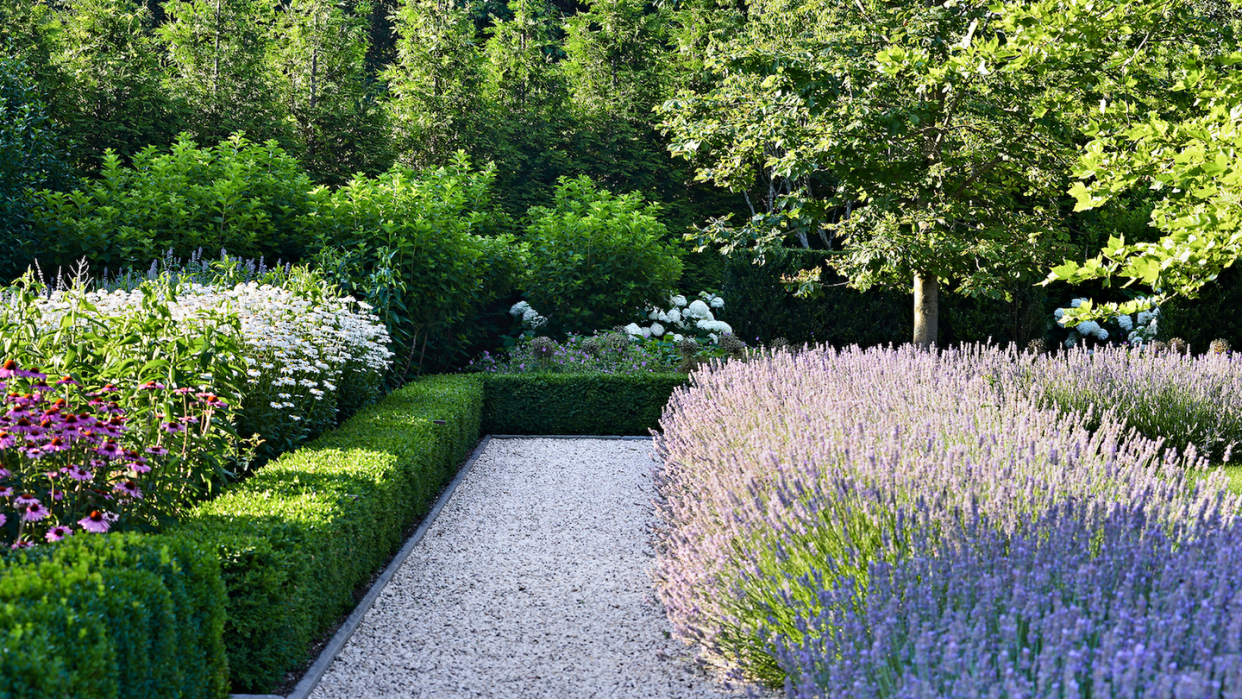
"Hearst Magazines and Yahoo may earn commission or revenue on some items through these links."
Plants are a natural choice for walkway borders whether the swooping line of a tightly shorn boxwood leading to a dramatic sea view or the soft edge of hostas on the charming path to a poolside patio. After all, like a room without baseboards, a garden without walkway borders is unfinished.
Don't underestimate the impact edging plants can have on defining an outdoor room and laying out a dreamy path through your back yard. Traditionally many gardeners turn to brick, stone, or steel borders to help keep flowers in their beds and grass out. However, by using a plant like an evergreen shrub, you can create a much softer look that appeals more to a wildly beautiful, inviting aesthetic. Plus, the plant possibilities are as numerous as you can imagine—from flowering shrubs like hydrangeas and rhododendrons to cottage garden plants like lady's mantle and catmint. Almost any plant can be an edging plant if it serves your intended purpose, but the classics are low-growing plants that form the bottom tier of landscape design.
Here, we propose the best plants for garden borders and paths, each with its own selling features (some are great plant choices for shade, while others would be perfect alongside a stunning outdoor fountain). Whether your outdoor room needs a sharp contrast to a romantic seating area or a dose of classic French-inspired flair (hello, lavender!), let these VERANDA-approved ideas for walkway borders help guide your eye. Read on for the best edging for flower beds, potager gardens and more.
Thrift
This perennial’s petite pink pom-pom flowers bring cheer to borders from late spring to early summer. Even when not in bloom, its grassy foliage is attractive at the front of a bed. Drought-tolerant thrift thrives in full sun and is hardy in Zones 3–9.
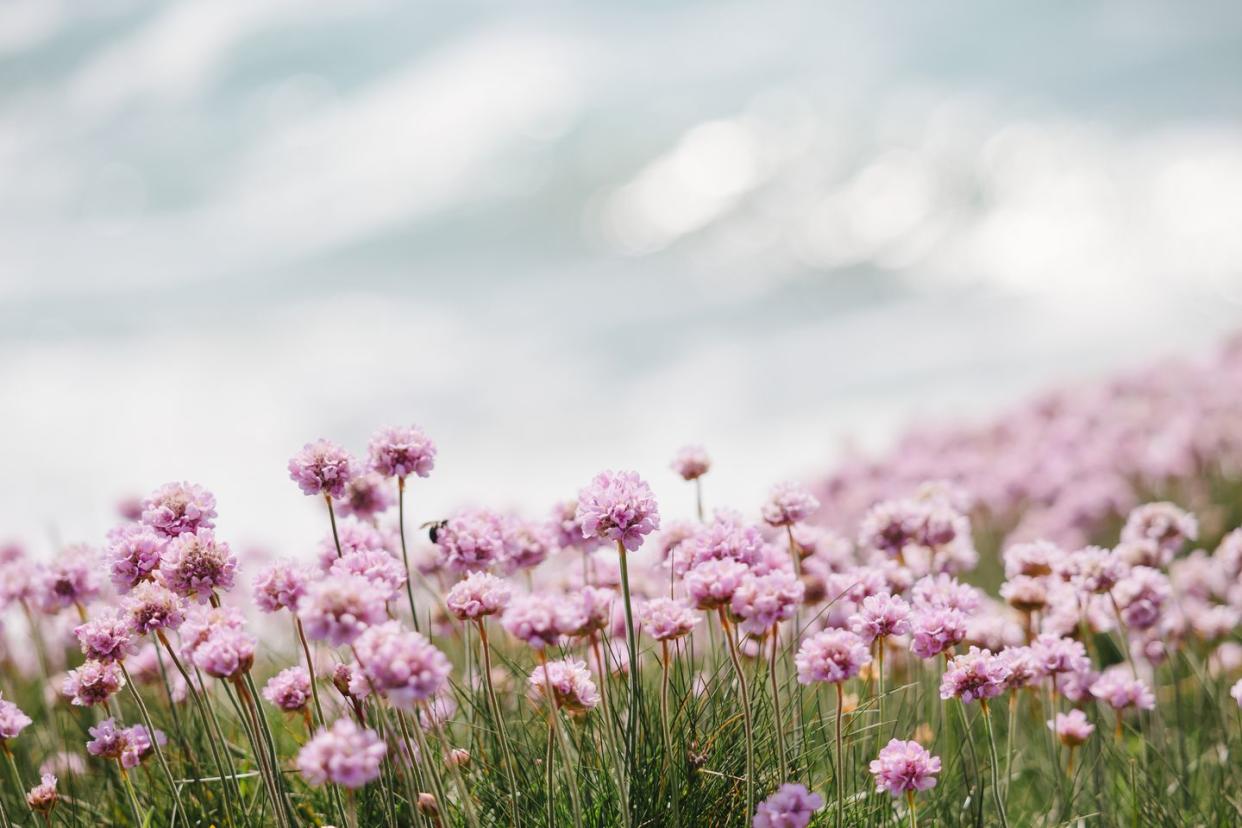
Impatiens
If you don’t want to wait for blooms, then you need impatiens. Their irregularly shaped flowers in vibrant purple, pink, red, orange, yellow, or white appear almost as soon as you plant them along a path. One of the easiest annuals to grow, impatiens blossom nonstop and can endure the heat with consistent watering. To avoid the common issue of downy mildew on leaves, try Beacon impatiens or Sunpatiens.
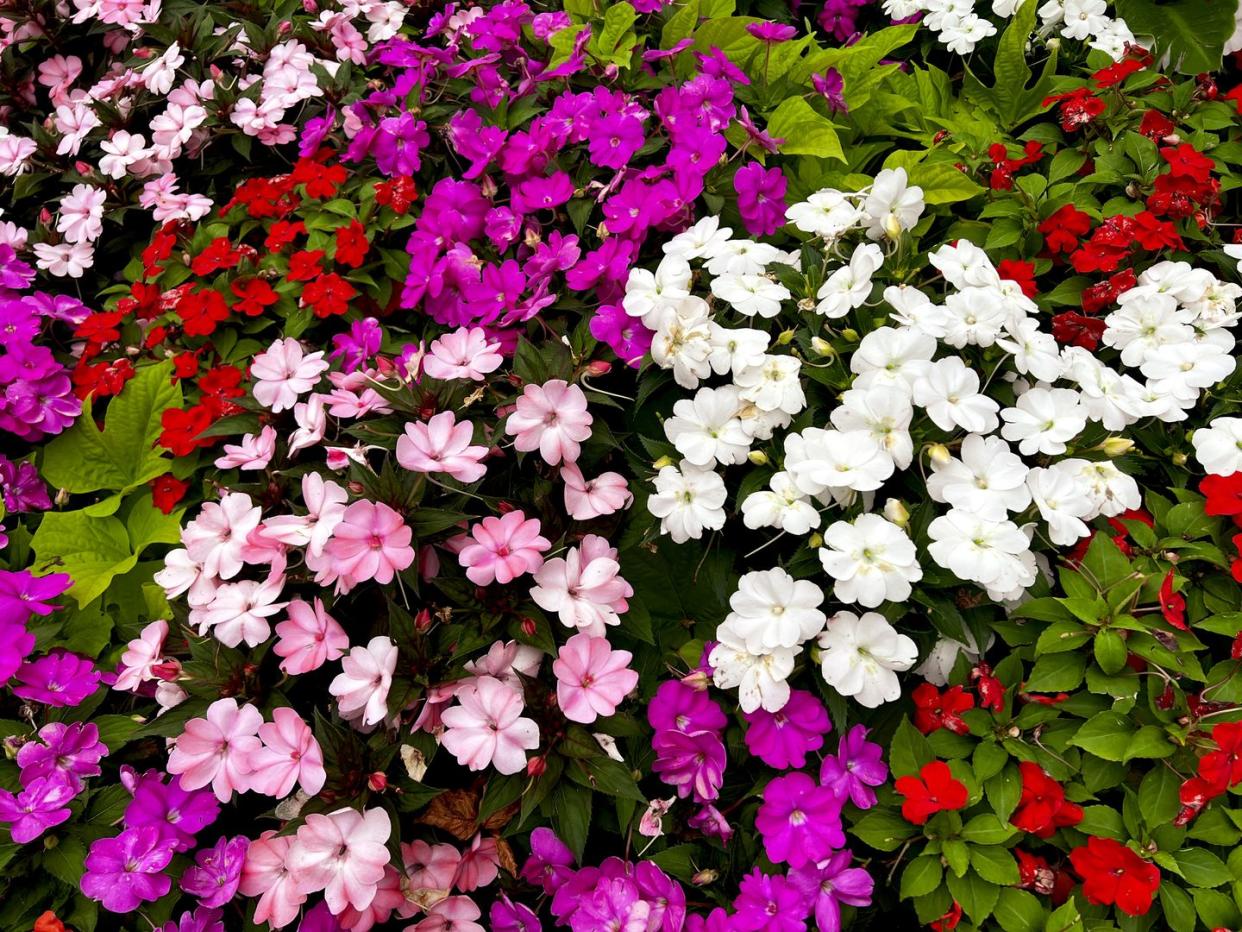
Creeping Juniper
Set off parts of your garden that change with the season with a consistent frame of this low-growing evergreen shrub. Creeping juniper doesn’t require pruning unless it spills over walkways and is drought tolerant once established so you can plant it in full sun and forget it.
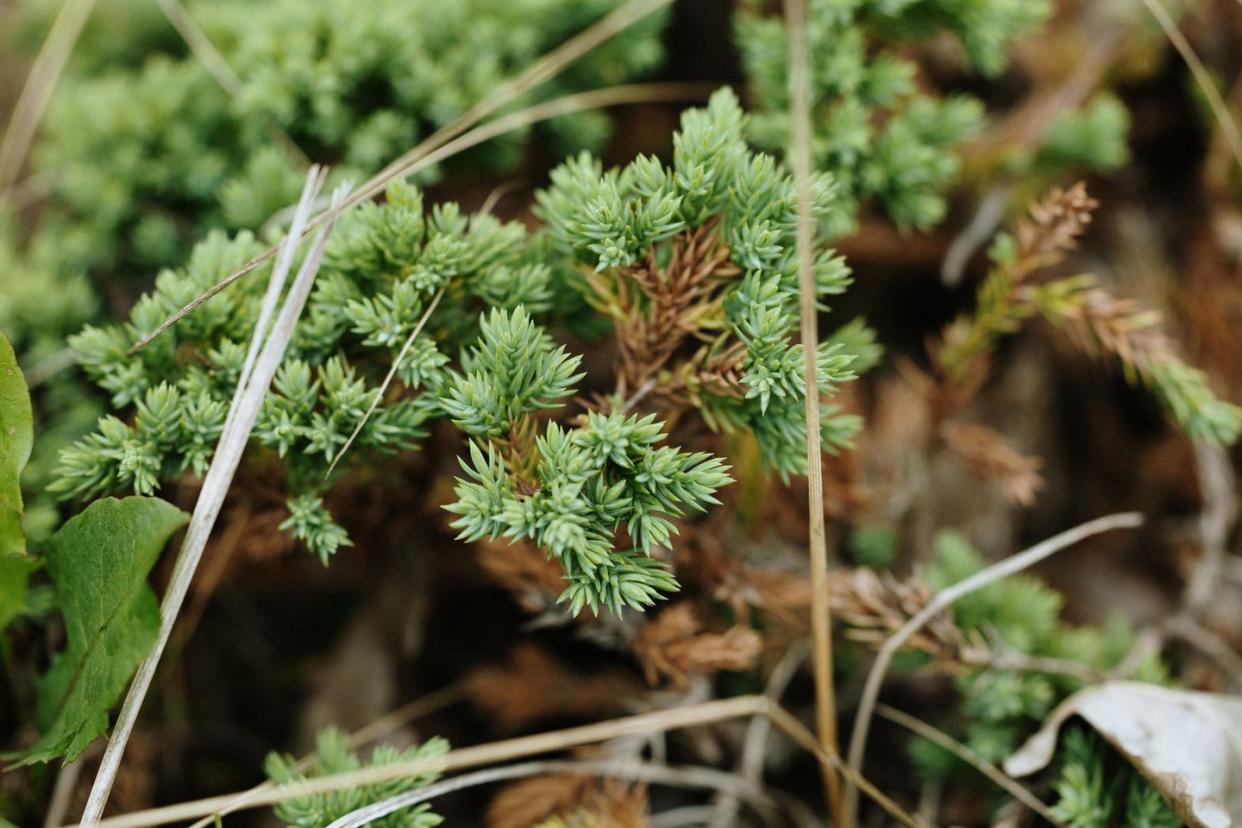
Dianthus
Smaller varieties of this showy flowering herb can work well as edging plants, providing not only a pretty pop of color but also a pleasant clove-like fragrance. Regular deadheading keeps the blooms coming as well as the butterflies and hummingbirds that feed on their nectar.
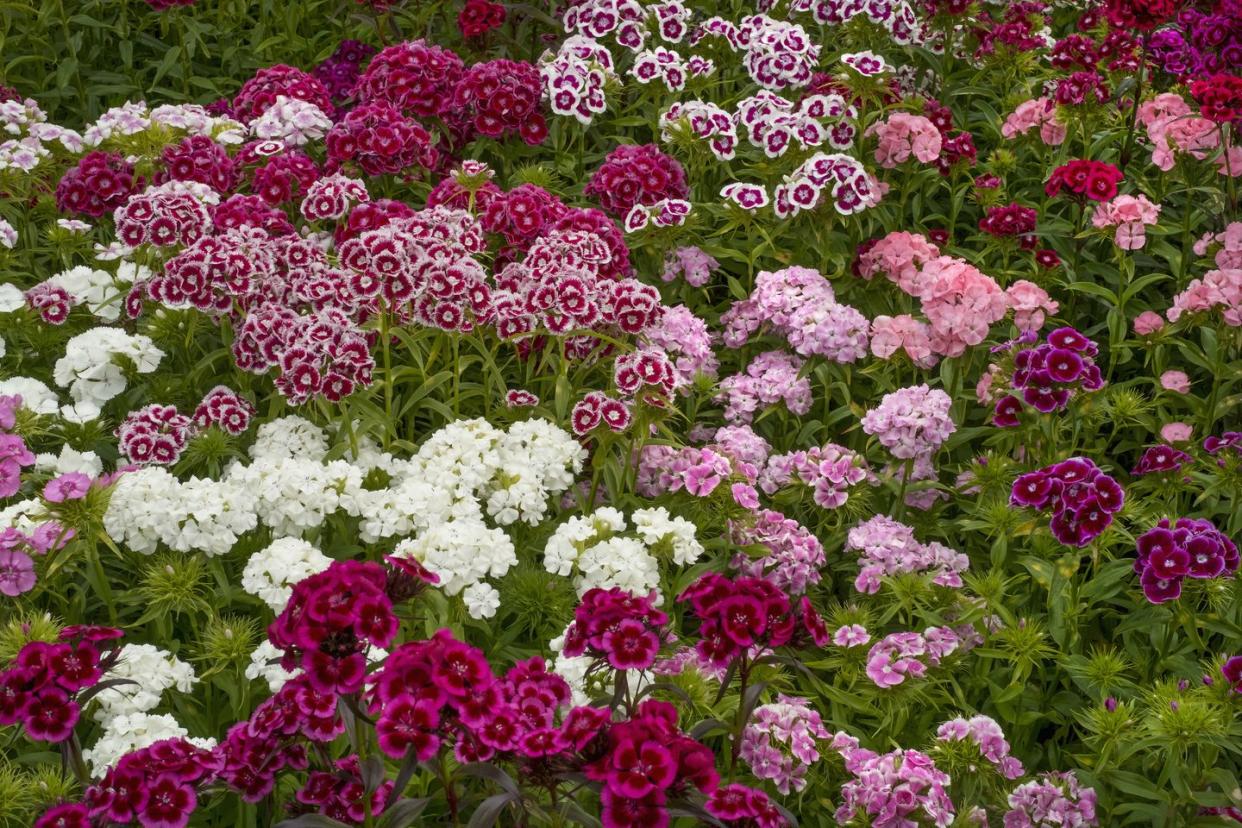
Lamb’s Ears
Incorporate some texture into a colorful border with lamb’s ears. Its fuzzy silver foliage pairs particularly well with purple flowering plants. This tough perennial herb tends to spread in most types of soil to form dense ground cover, so if used as an edger, you’ll need to keep it in line.
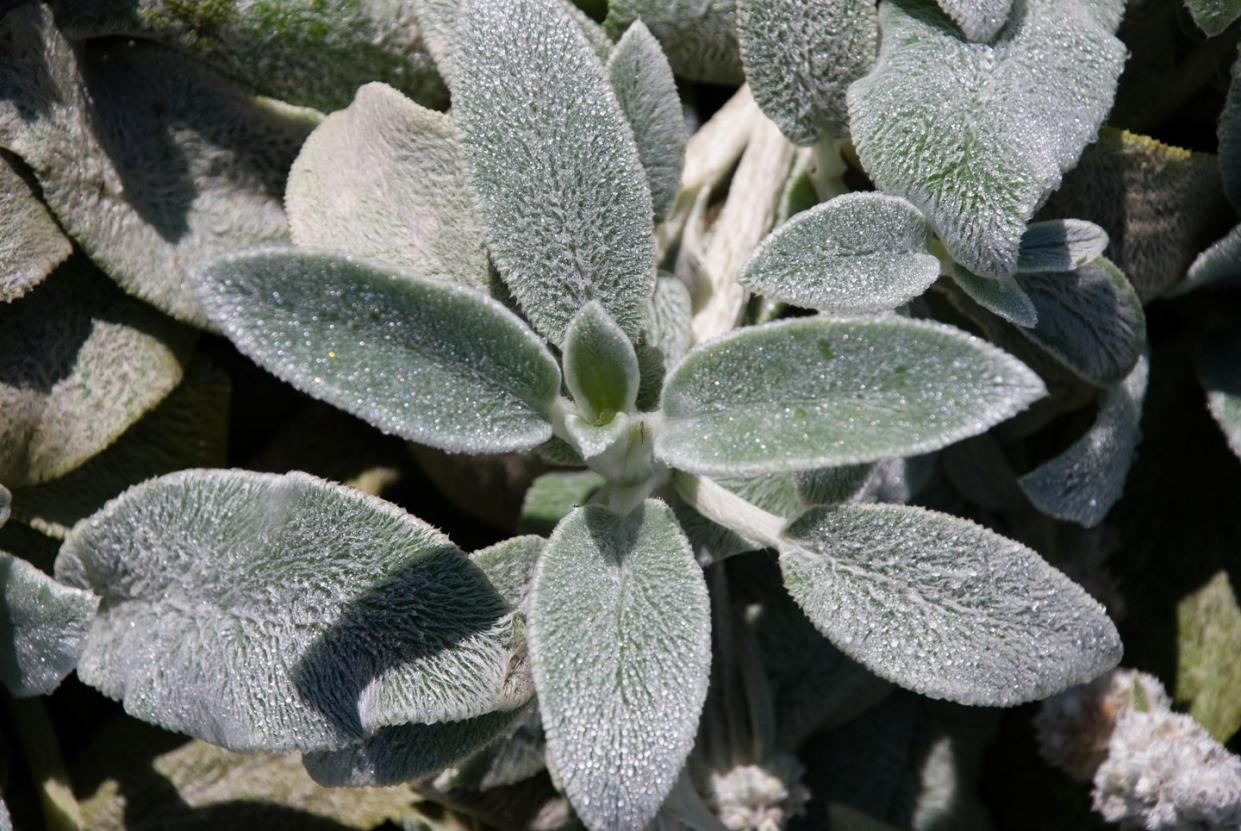
Dahlia
With all the sizes, shapes, textures, and colors of dahlias, it might be hard to pick just one to accent your border garden. Go for a mix of bulbs to get multiple styles of blooms. Dahlias behave like perennials in warmer regions but annuals in cooler climates. In Zones 1–7, overwinter by carefully digging up the tubers in the fall and storing them in a cool, dark place in slightly damp peat moss or sawdust to prevent a difficult decision about which variety to plant next year.
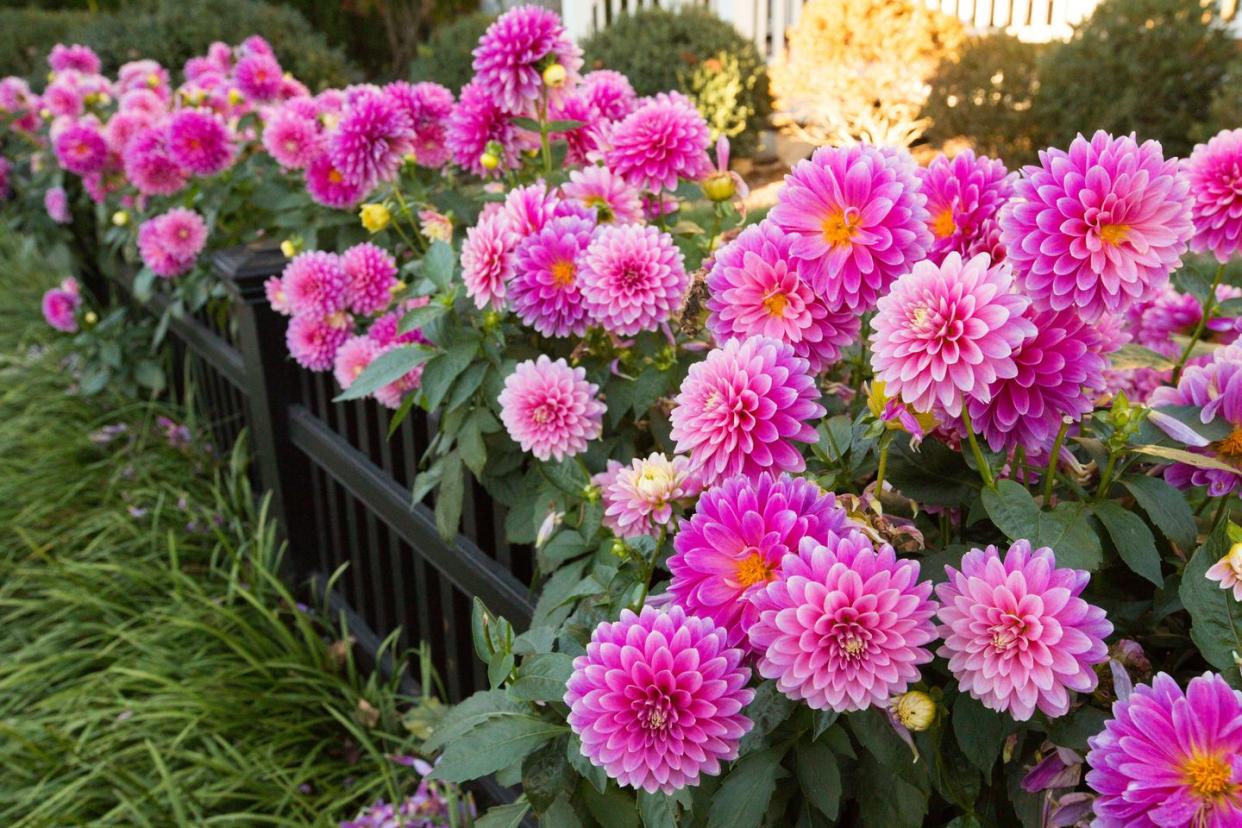
Astilbe
Add this perennial for a hint of long-lasting color in a partially shaded border. Depending on the variety, astilbe boasts plumelike flowers of white, pink, or red from mid-spring to late summer. Its fernlike bronze and green foliage provides a nice textural contrast to plants with large, broad leaves like heucheras and hostas.
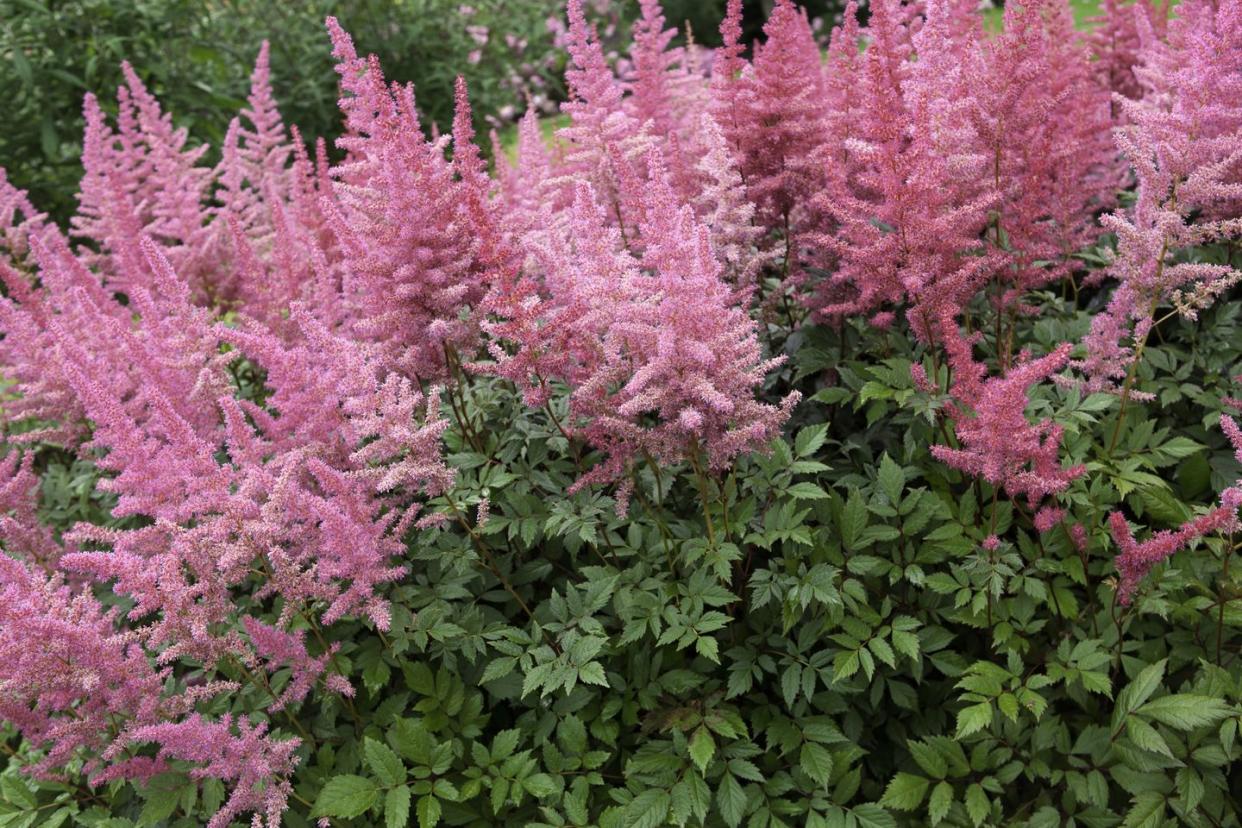
Daylily
Though its dozens of bell-shaped flowers are short-lived, the daylily’s mounds of green foliage make it a solid edging plant choice for spring through fall. Plant lots of varieties for a long-term display of color. This popular perennial, which blooms in colors from yellow to red, mixes well with any palette.
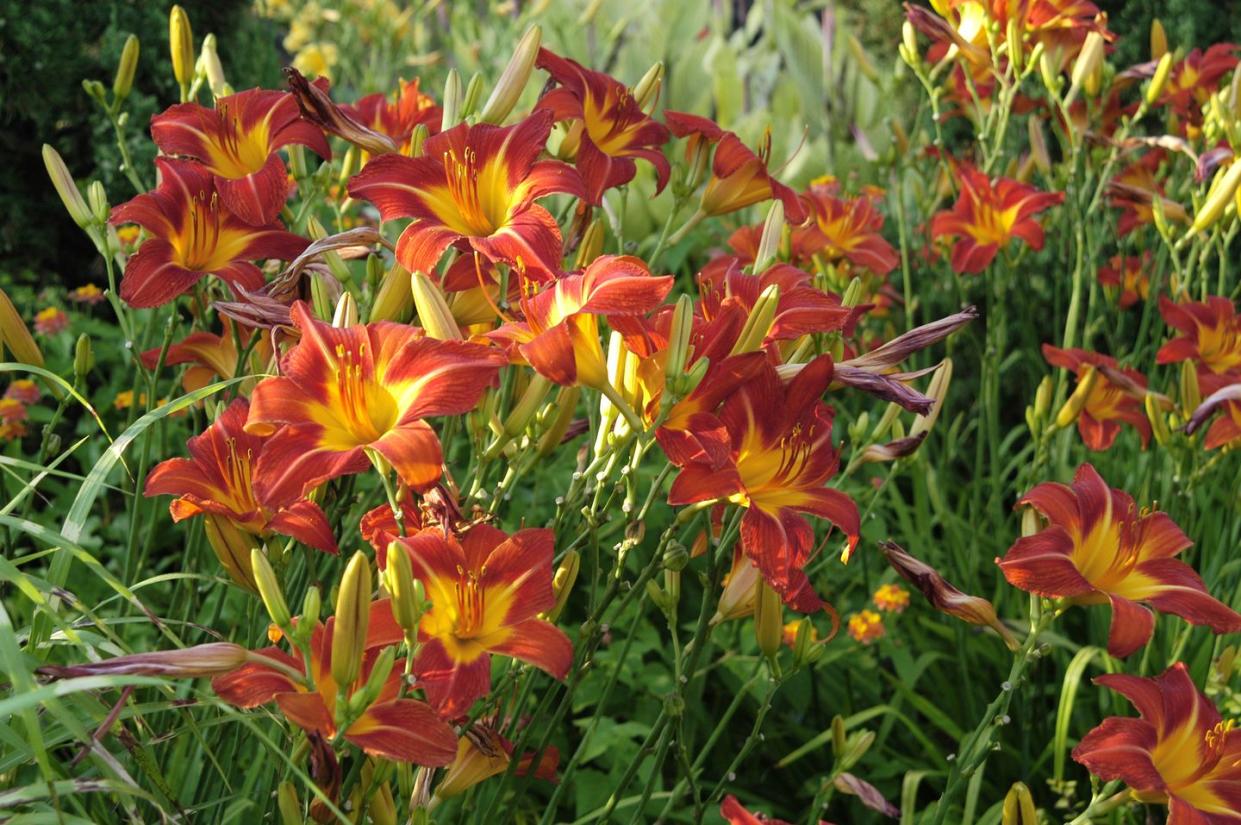
Coral Bells
Coral bells’ feathery spikes of tiny pendant flowers in spring and summer aren’t the main attraction for most gardeners. Instead its vibrant, saturated foliage is sought to play up the colors of other border plants. A variety with dark purple leaves makes yellow flowers glow, and caramel-colored leaves bring out the tones of green leaves.
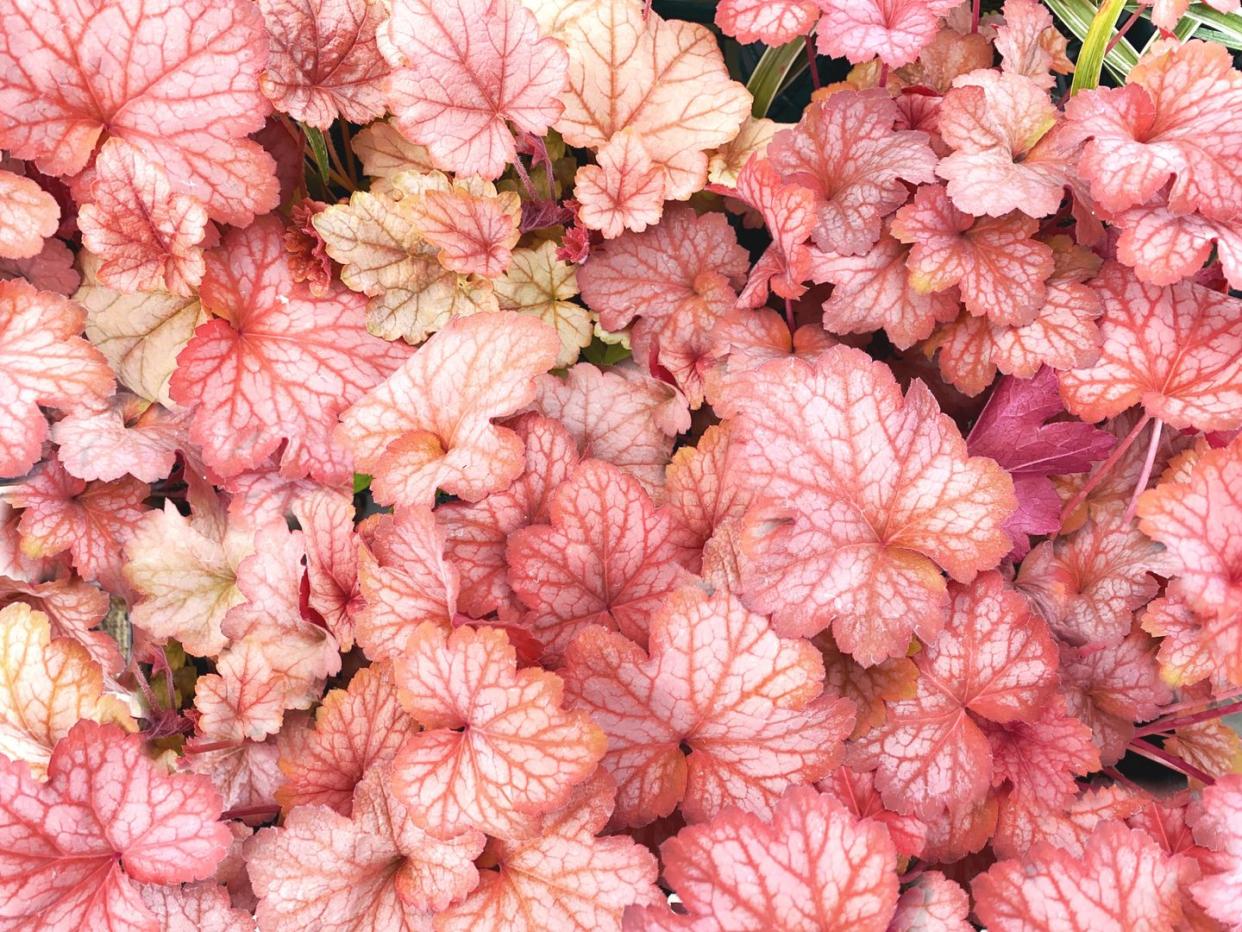
Sedum
Upright sedum varieties form vertical clumps and are ideal for adding fall flair along the front of sun-drenched borders. Also known as stonecrop, this perennial holds up well in heat and drought and attracts butterflies and other pollinators to your garden.
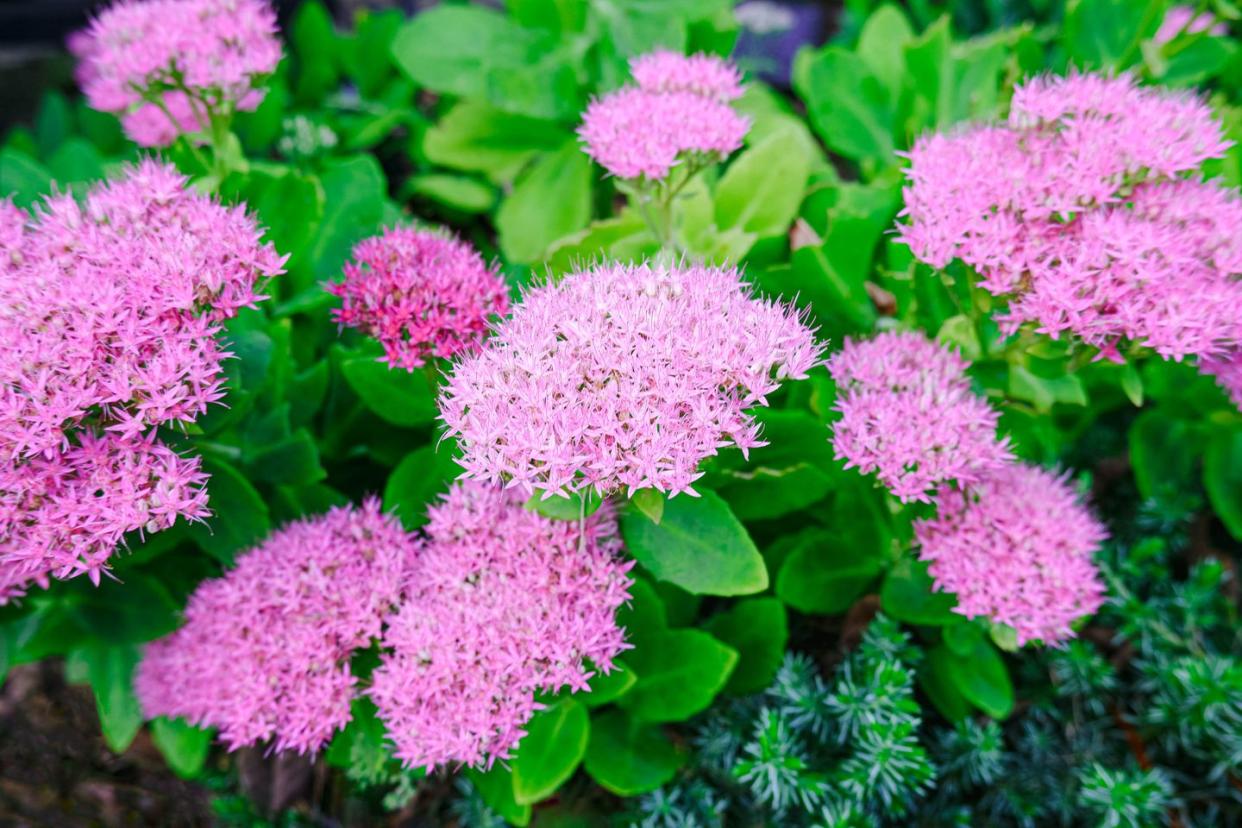
Catmint
Use catmint to soften a border’s edge and provide contrast to spiky plants like irises and yuccas. Its purple-and-blue blooms pair well with pink and yellow flowers. If you cut the foliage back after this perennial blooms, then you can enjoy two to three flushes of color each season.
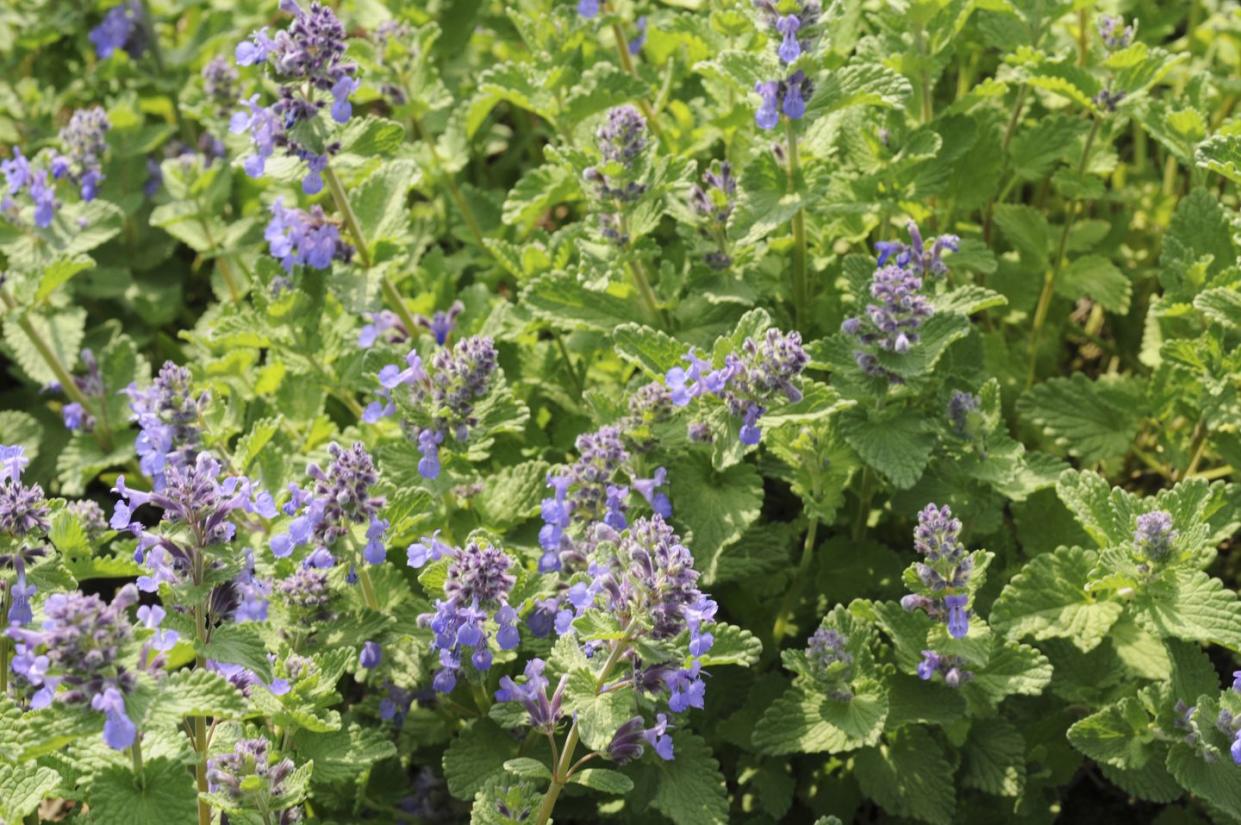
Rhododendron
A crowd favorite for their explosive purple and pink flowers, rhododendrons grow in a surprising number of shapes and sizes. Look for medium-sized shrubs that thrive in dappled sunlight when using rhododendrons as borders.
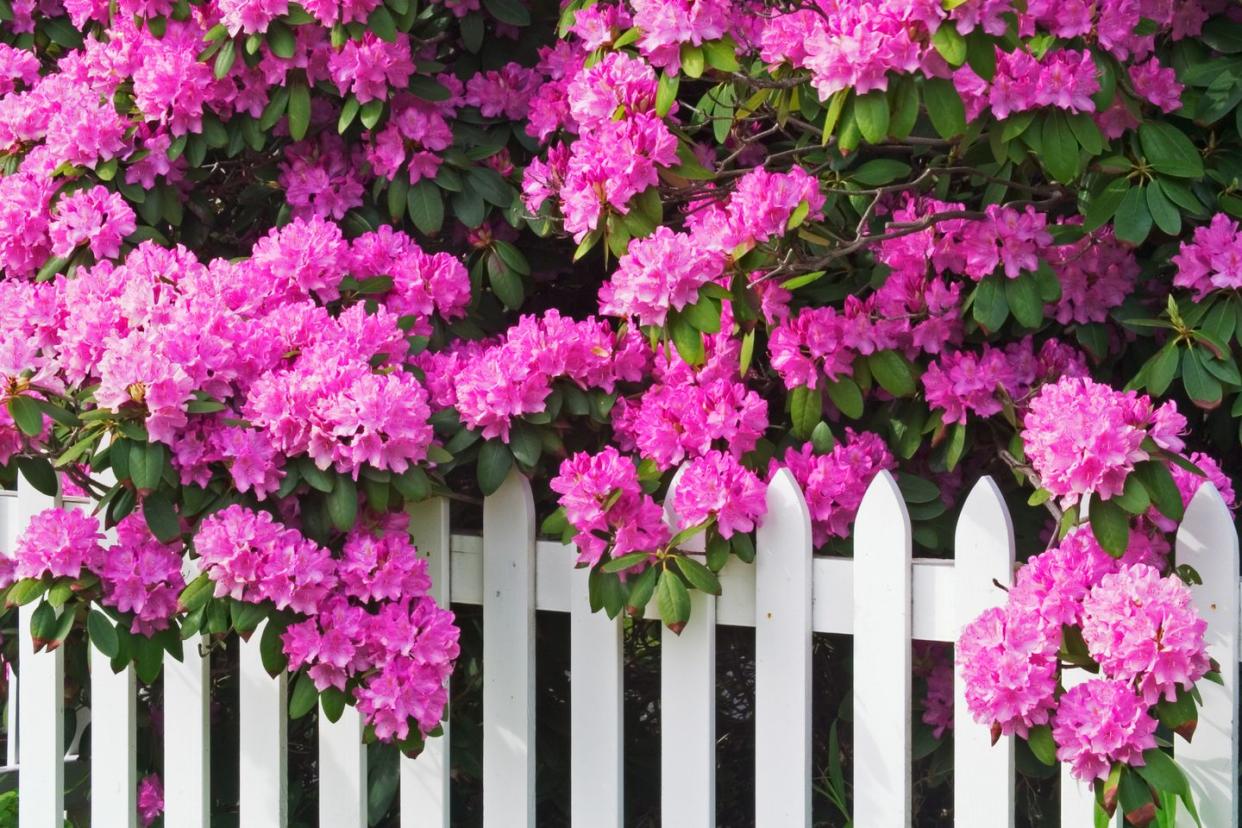
Irish Moss
This herbaceous perennial happens to be one of the most versatile gems in the garden, as it can fill in between pavers or serve as a verdant border of a rock garden. Little white flowers pop up throughout the growing season when planted in full light.
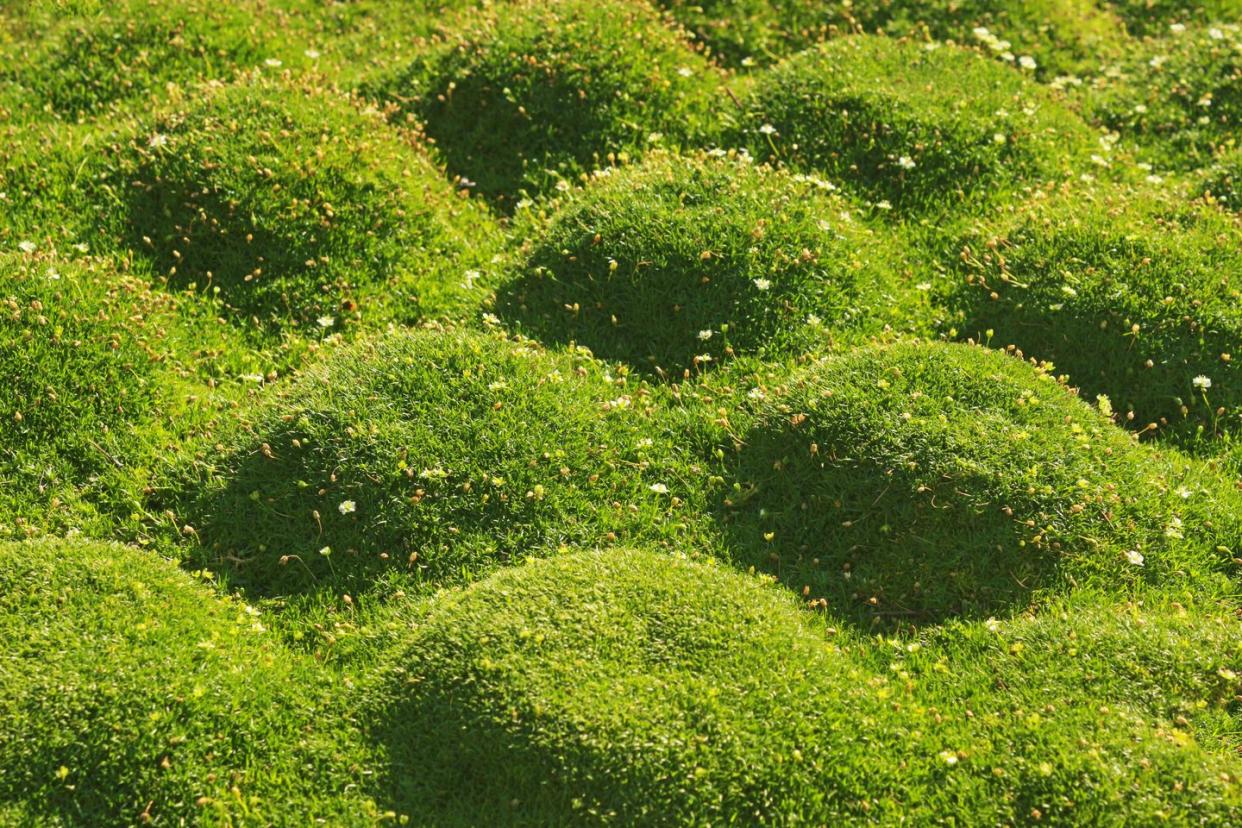
Moss Rose
Moss rose is a superb choice for dry climates, as it is drought tolerant and thrives in full sun. The bright-flowered annual typically doesn't spread outside of where it's initially sowed, making it a reliable edging plant for pathways or smaller flower beds.
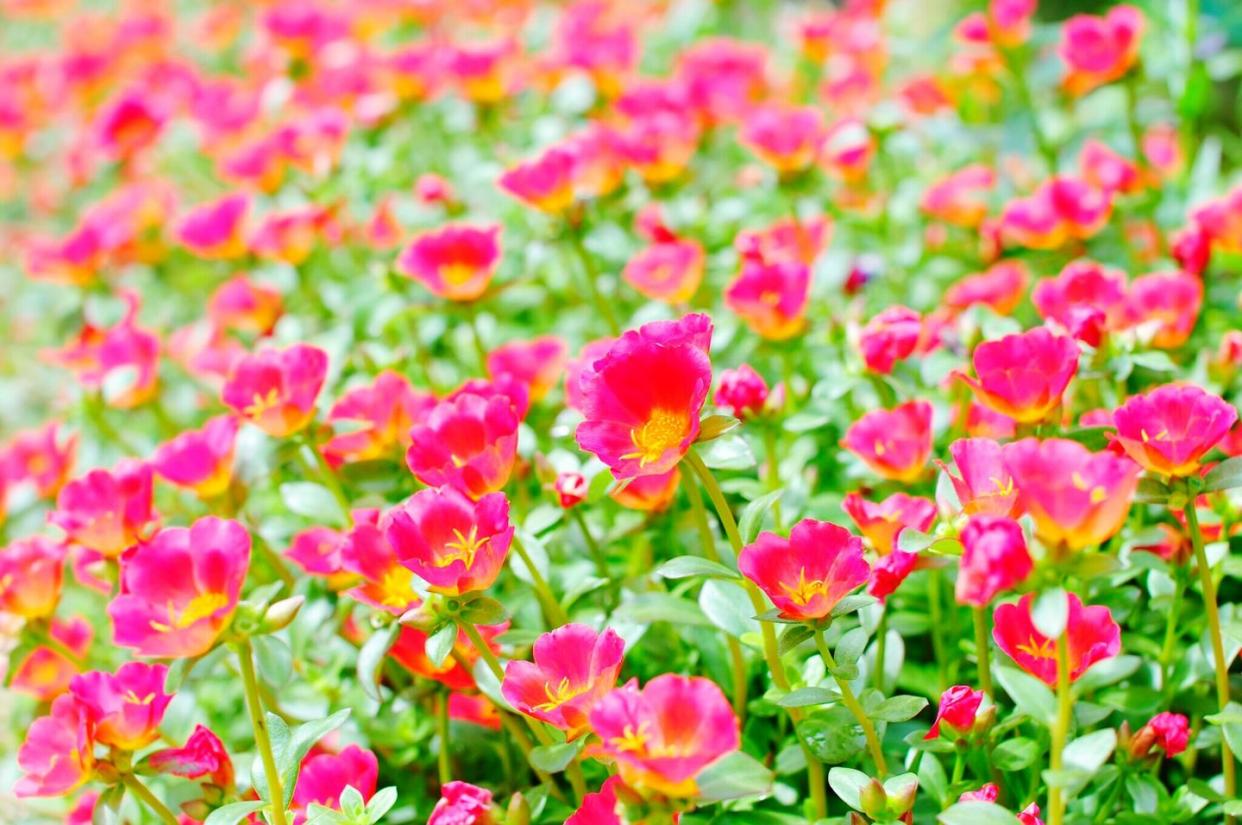
Liriope
In its early stages of life, liriope tends to look like any old type of tall grass, but it's a herbaceous perennial that blooms striking lavender-colored flowers in the heat of late summer and early fall. The sturdy foliage stands tall as an edging plant and even prevents erosion in the garden.
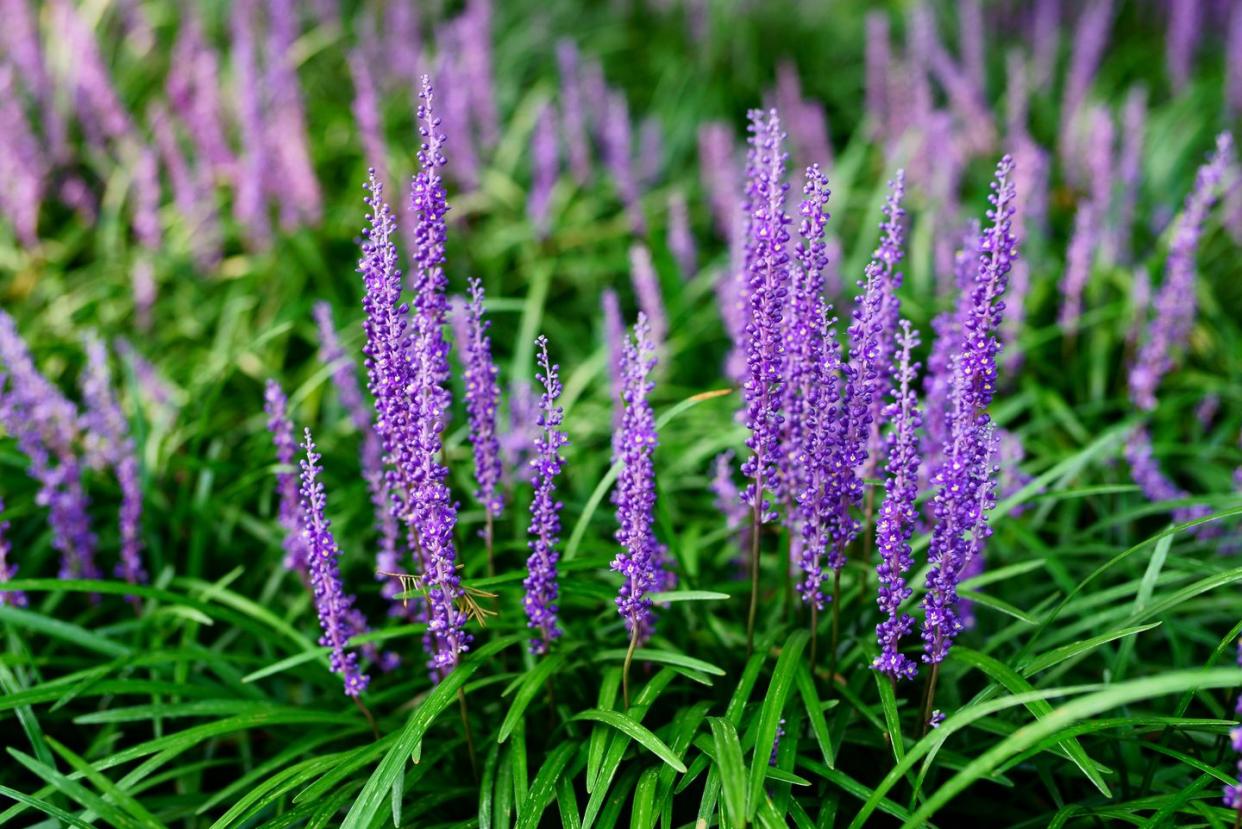
Fern
Plant lush green ferns along shaded driveways and woodland paths or in dappled light. Because ferns prefer moist soil, they thrive when used as edging plants beside streams or ponds.

Creeping Thyme
This ornamental herb, which boasts pretty purple flowers, makes for a fragrant ground cover ideal for lining steps or between pavers on patios or terraces. When crushed, the flowers emit a fresh herbal scent. Plant this deer-resistant ground cover in full sun to partial shade.
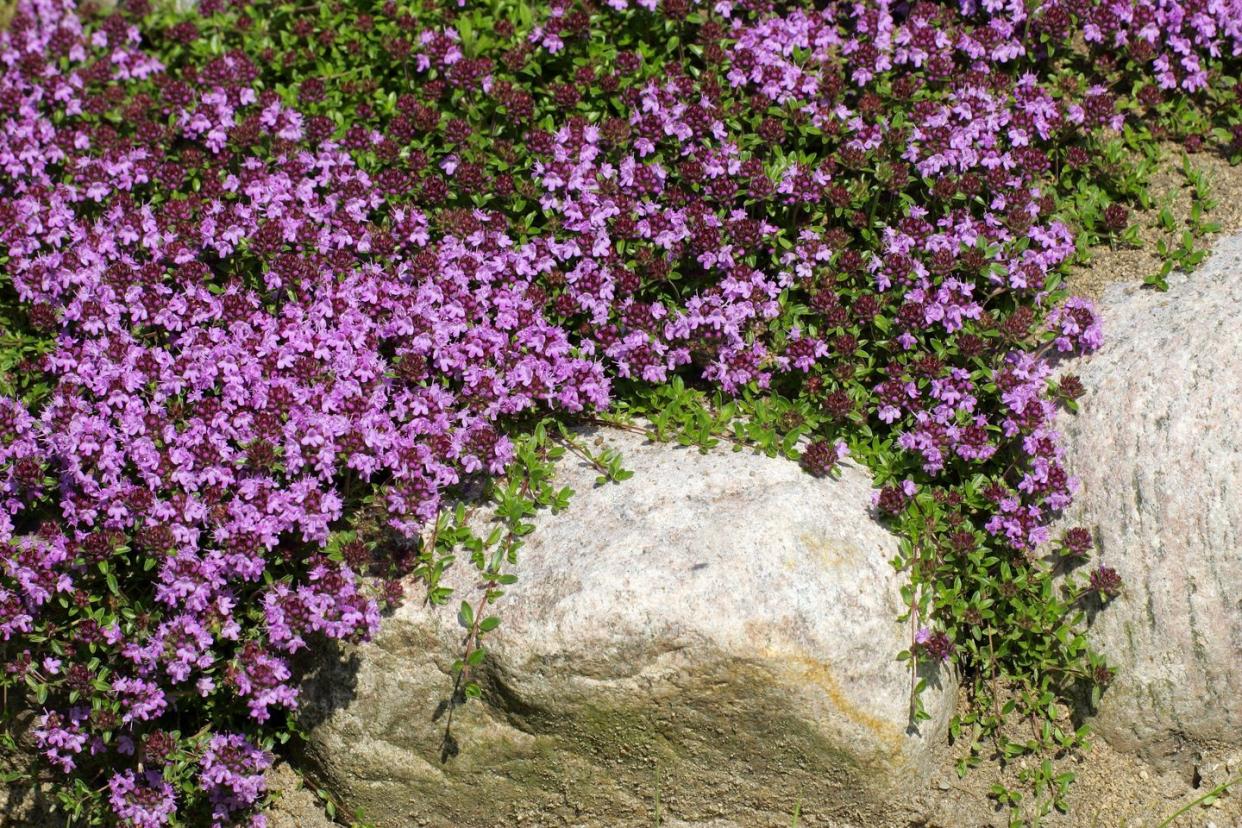
Fountain Grass
Ornamental grasses such as fountain grass are ideal for planting along borders, paths, or driveways that receive full sun. Dwarf varieties grow to two to three feet tall and three feet wide and feature fine green foliage in the summer that produces pinkish "foxtail" blooms in late summer to early fall.
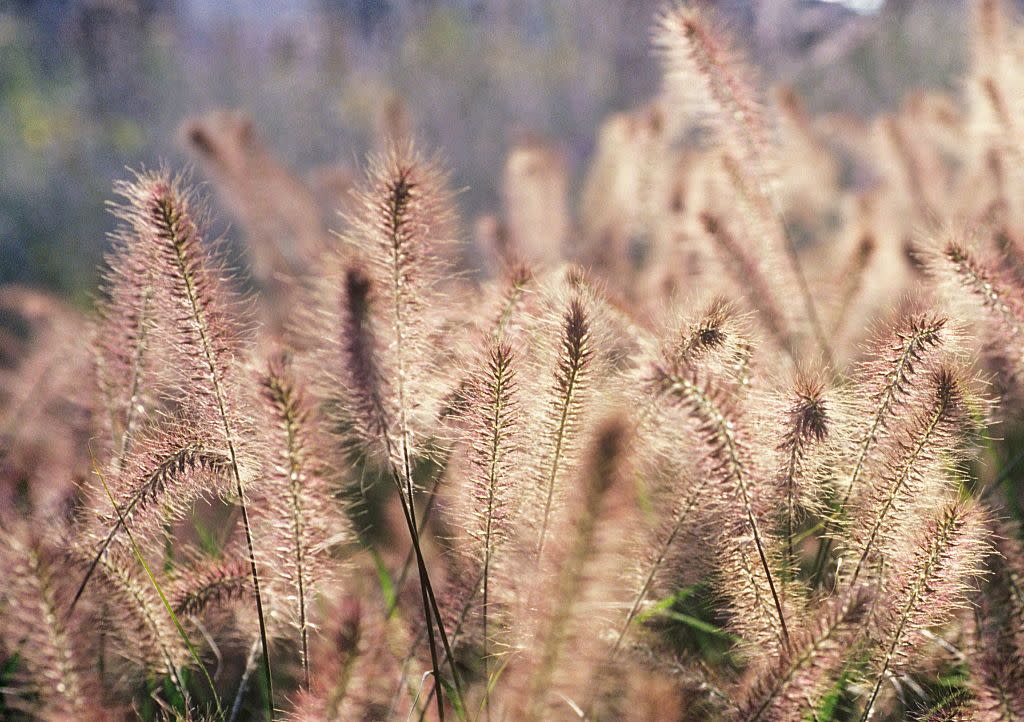
Mophead Hydrangea
These medium flowering shrubs—which produce blooms in shades of pink, blue, purple, and white—work well for lining paths and driveways in partial shade and separating gardens into smaller spaces. Their size also makes them ideal as standalone edging plants or for layering with other edging plants, like ferns or hostas.
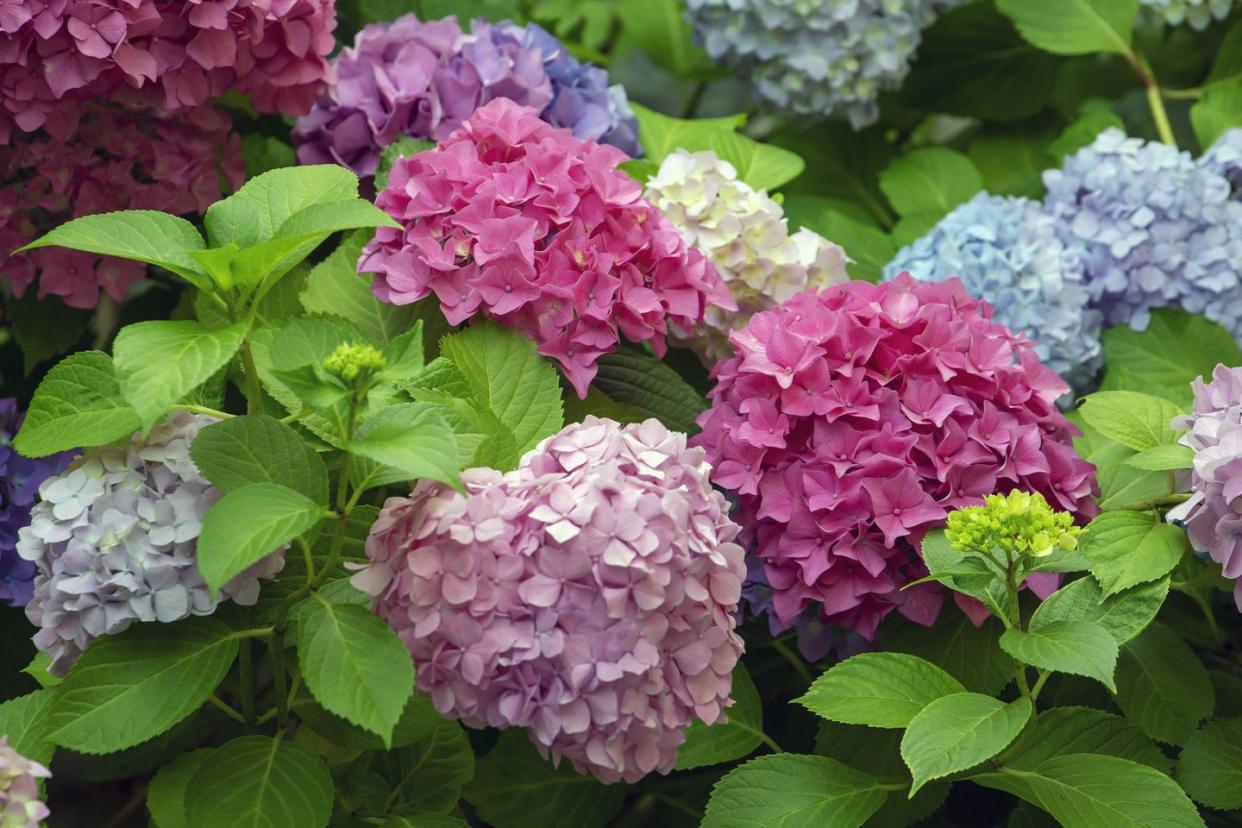
Boxwood
The pairing of boxwood and roses (here, Iceberg roses) is a classic, with the strong lines of the boxwood tempered by the abundance of the roses draping overhead. Designed by landscape architects Hoerr Schaudt, with Christina Rottman, this elegant contemporary garden has a backdrop of mountains and the sea, dual senses echoed in the curving design of the lush boxwood against the pebble mosaic.
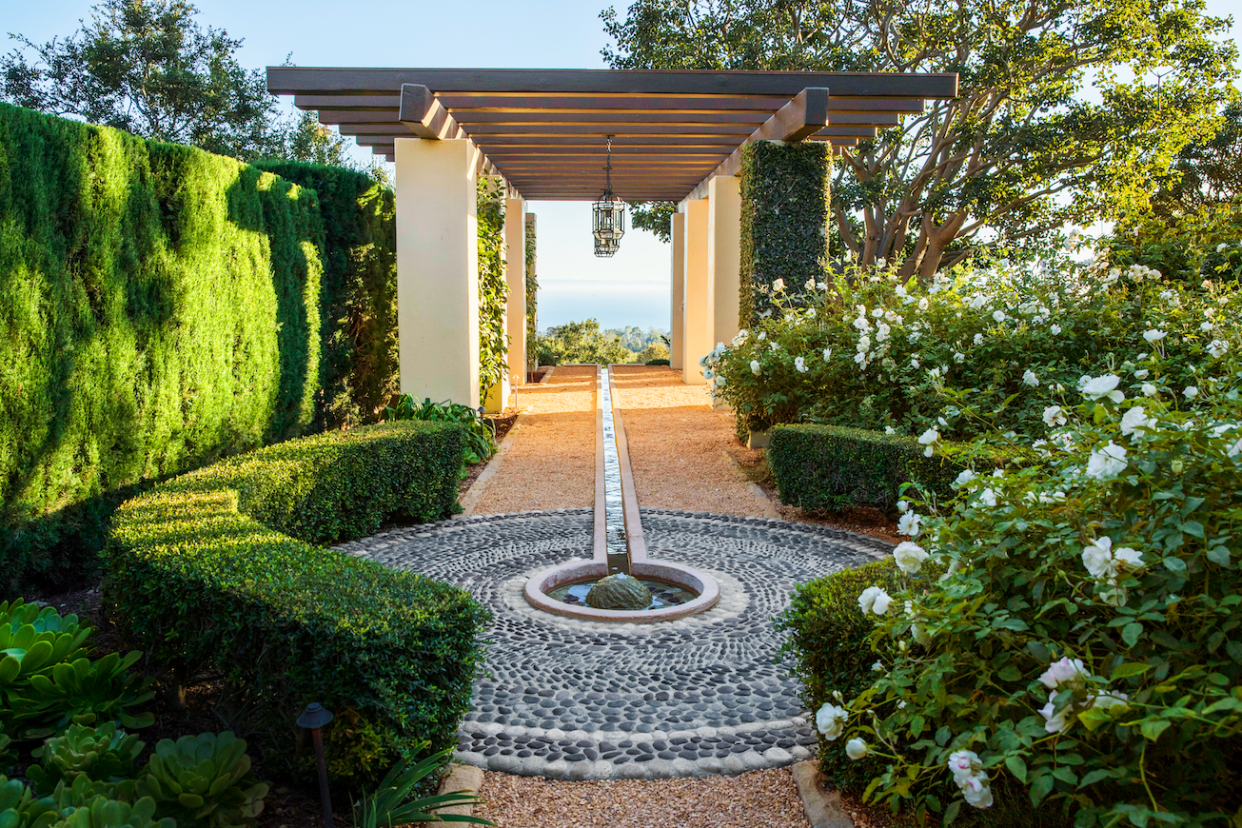
Lavender
With bursts of color and a low path-lining height, lavender is a popular edging choice. Here, a mass of 1,200 lavender plants creates a bold flowering border on the property of a Long Island, New York, estate (designed by Hollander Design Landscape Architects, with Haynes-Roberts, Inc.).
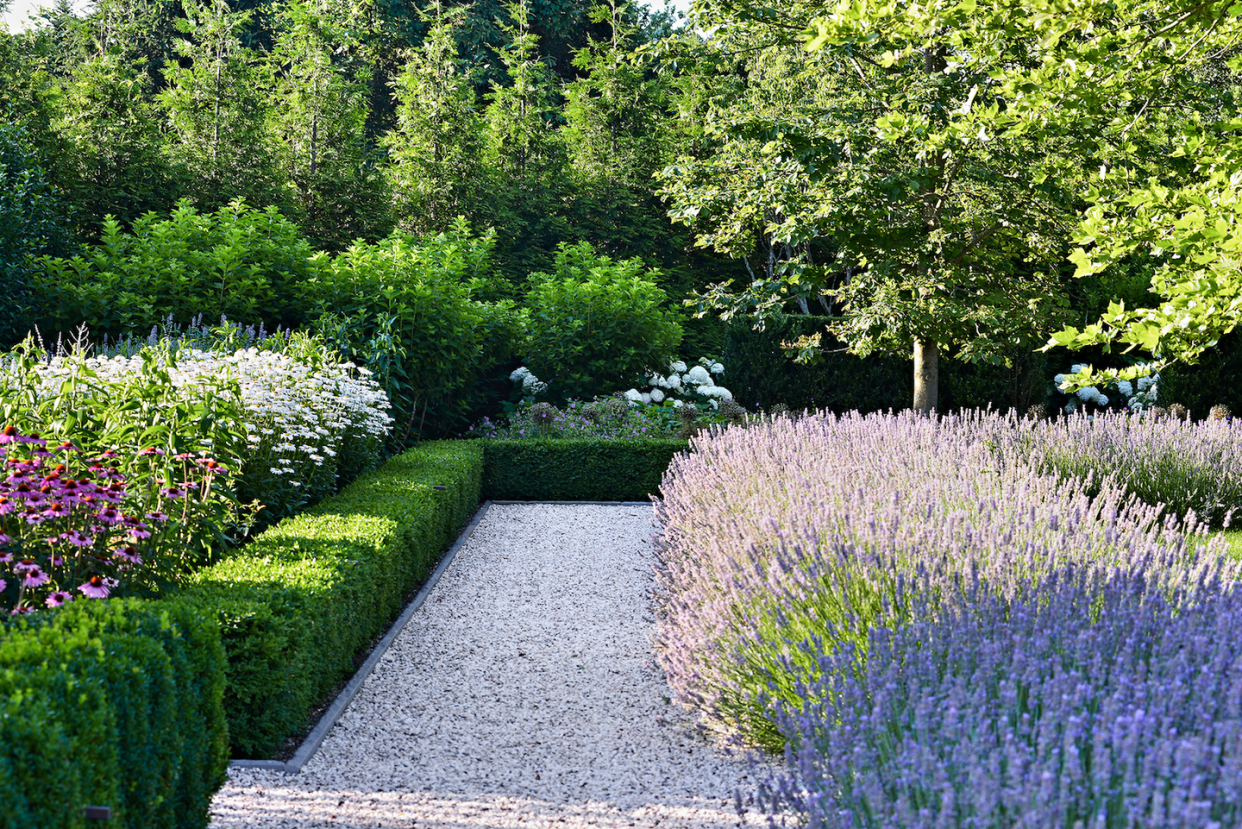
Hosta
The long-lived hosta is another classic choice for a garden path. Here, grass-joined bluestone pavers are edged with variegated hostas for a soft and organic border along the walkway to a poolside dining terrace (Janice Parker Landscape Architects, with Darren Henault).
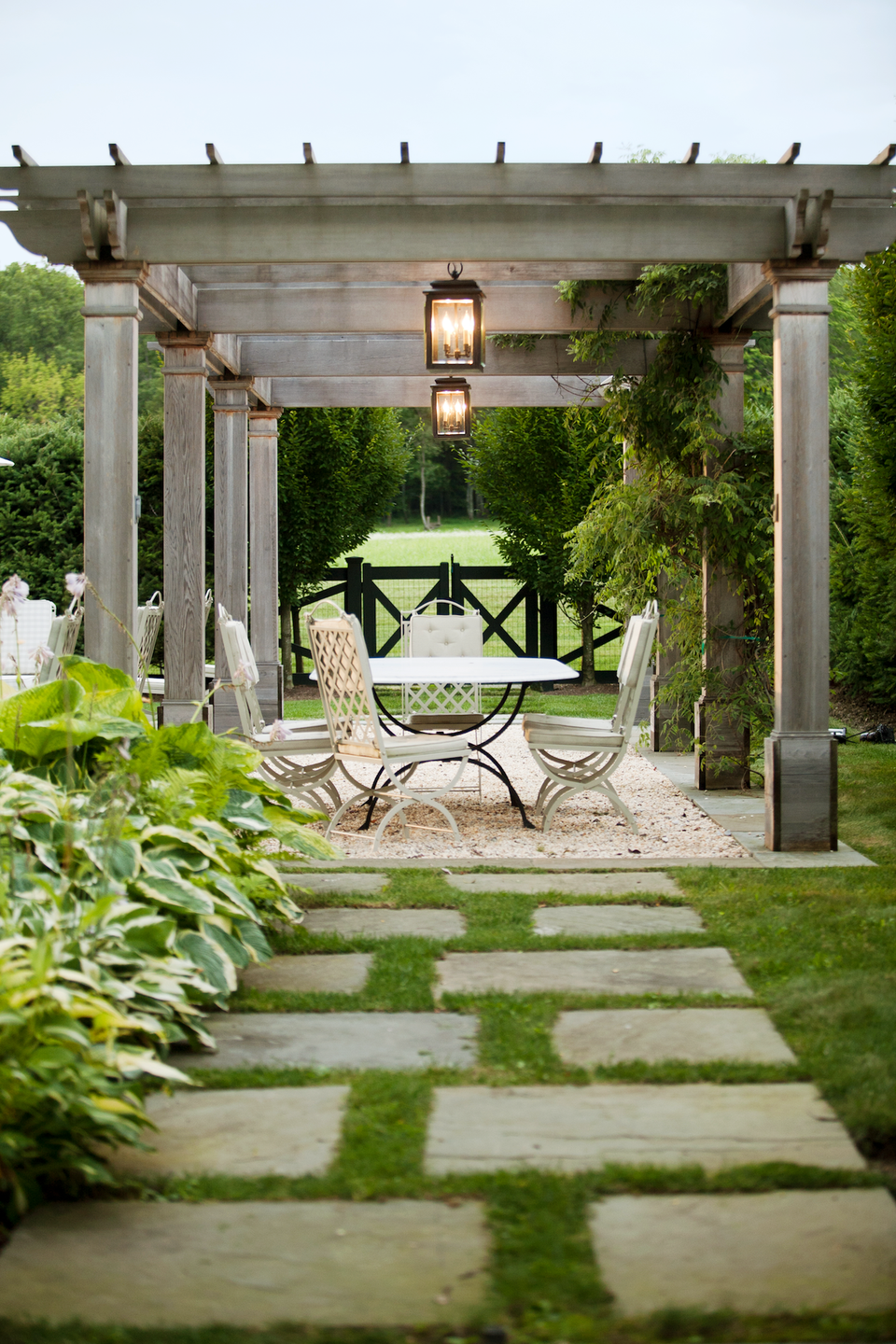
Ilex
This garden's design, by Hollander Design Landscape Architects, with Haynes-Roberts, Inc., centers two squares divided by a path lined with ilex (holly) hedges, which frame the pool in two rows of varying heights. Ilex is a popular alternative to boxwood for borders and provides continuous color year-round.
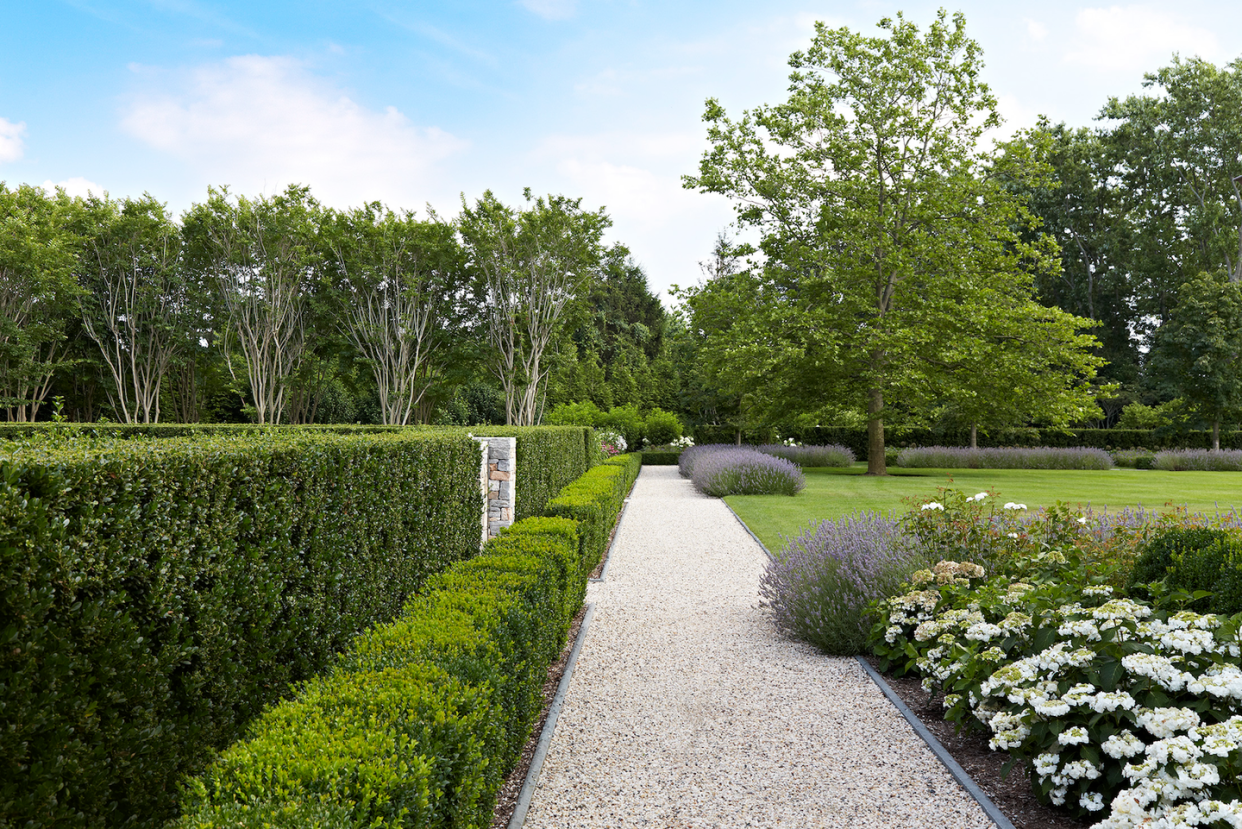
Moss Phlox
In bloom from April through May, moss phlox is a low-maintenance option for edging. Sometimes referred to as creeping phlox, it's an excellent choice for full sun or areas with sandy or rocky soil.
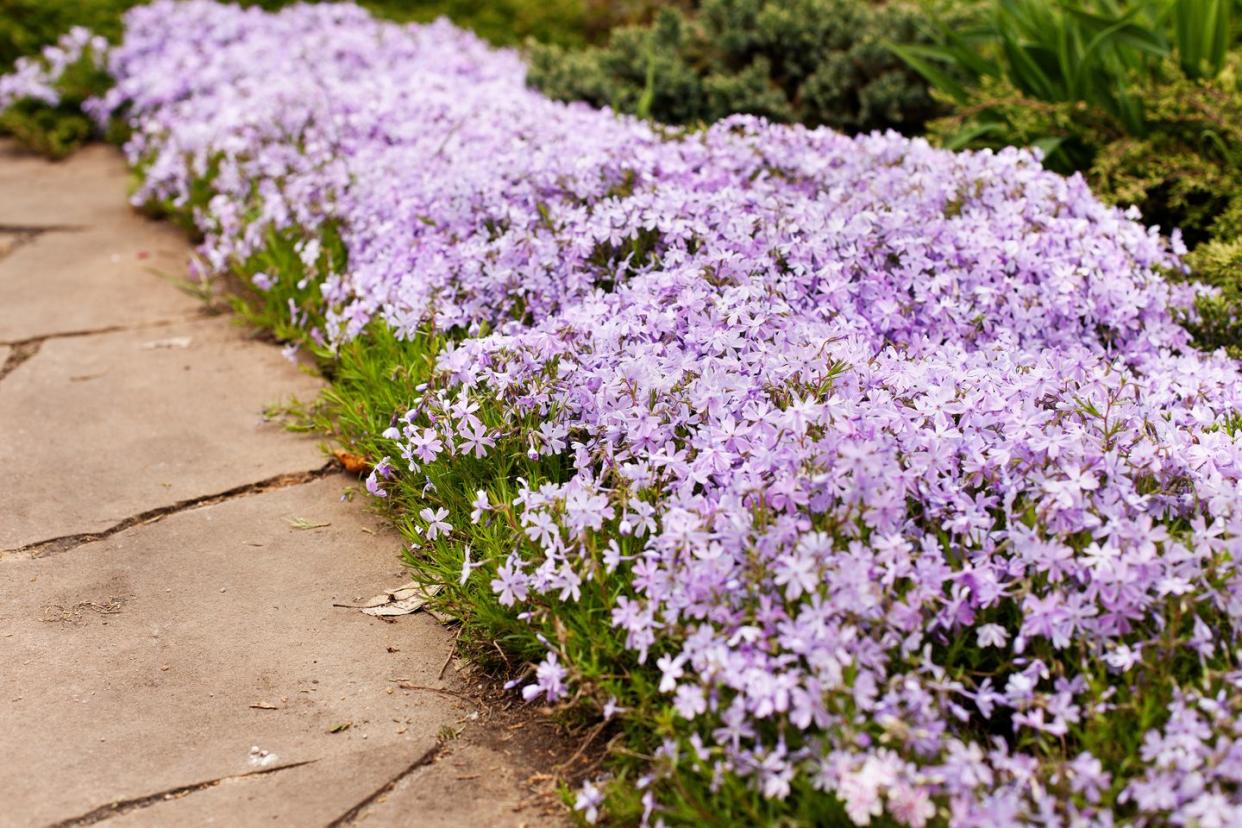
Hornbeam
If a lush green border has caught your eye, consider the hornbeam hedge. Similar to beech hedges, hornbeams give you a brilliant display of seasonal color as the year progresses and can be trimmed to suit whatever shape you need for your space.
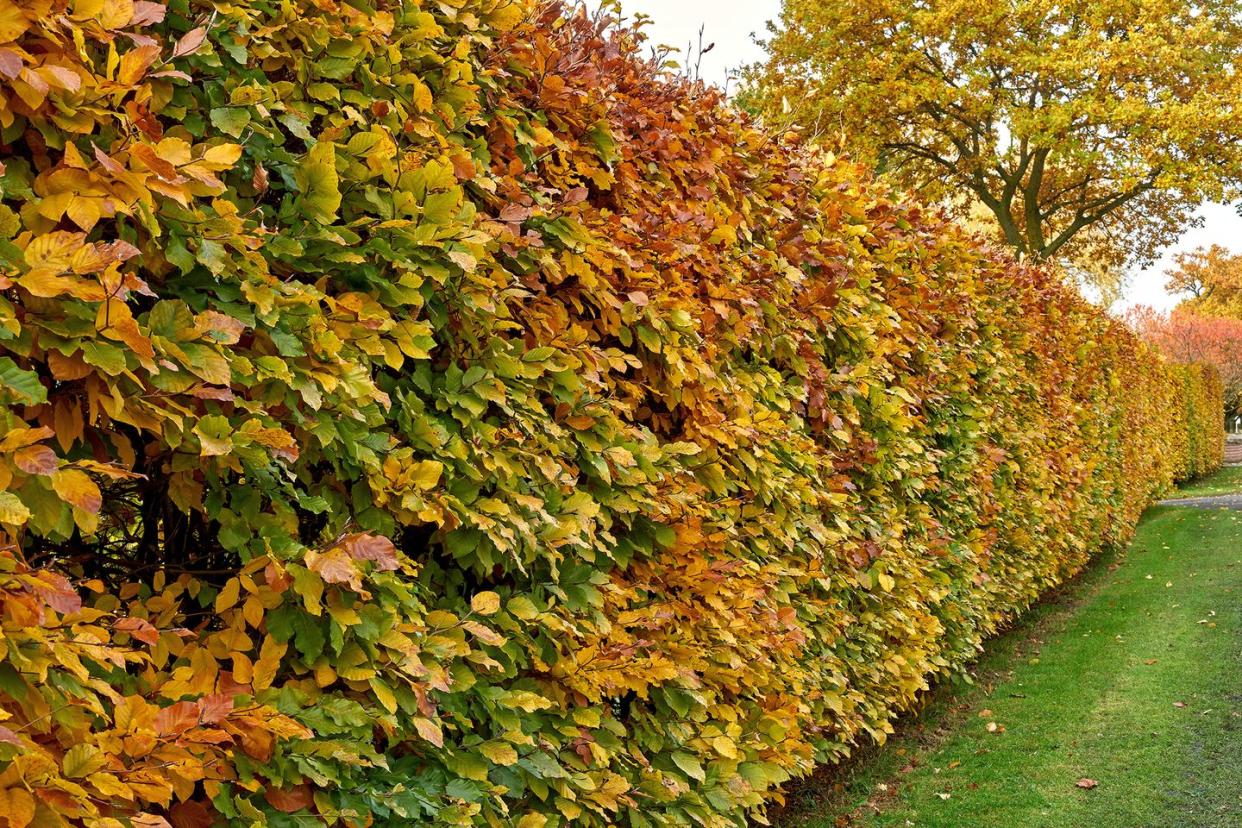
Zinnia
Amazingly versatile and easy to grow, zinnia can make for a dazzling display in a garden border. Plant a mix of varieties for various heights and colors to up the visual interest. Wait until spring to plant seeds directly in warm soil.
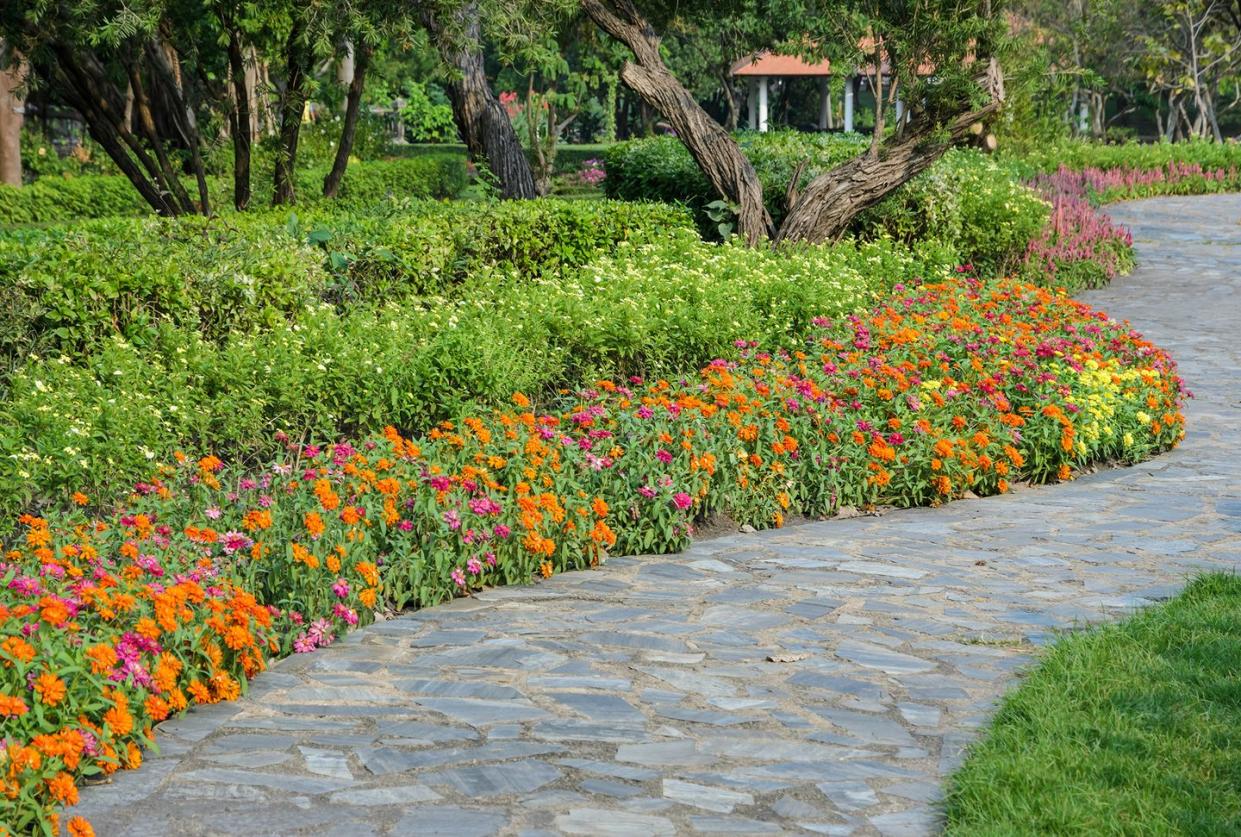
Begonia
With numerous varieties suitable for all manner of soil and climate conditions, begonias are a versatile garden border option. Most require partial sun. Choose plants with dark leaves (rather than lighter green leaves) for more heat tolerance.
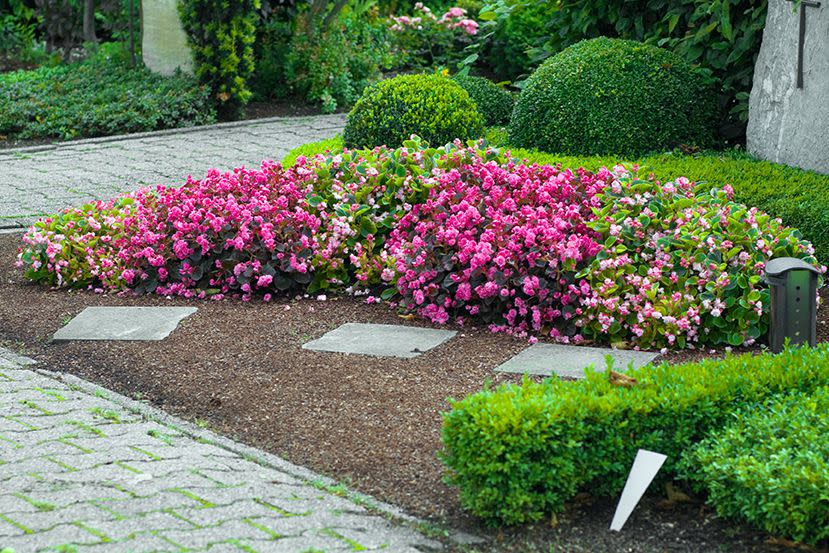
Lady's Mantle
The low-maintenance, drought-tolerant flowering lady's mantle provides lovely ground cover in walkways or underneath trees. The plant's gentle edges make it a perfect choice for borders in need of softening.
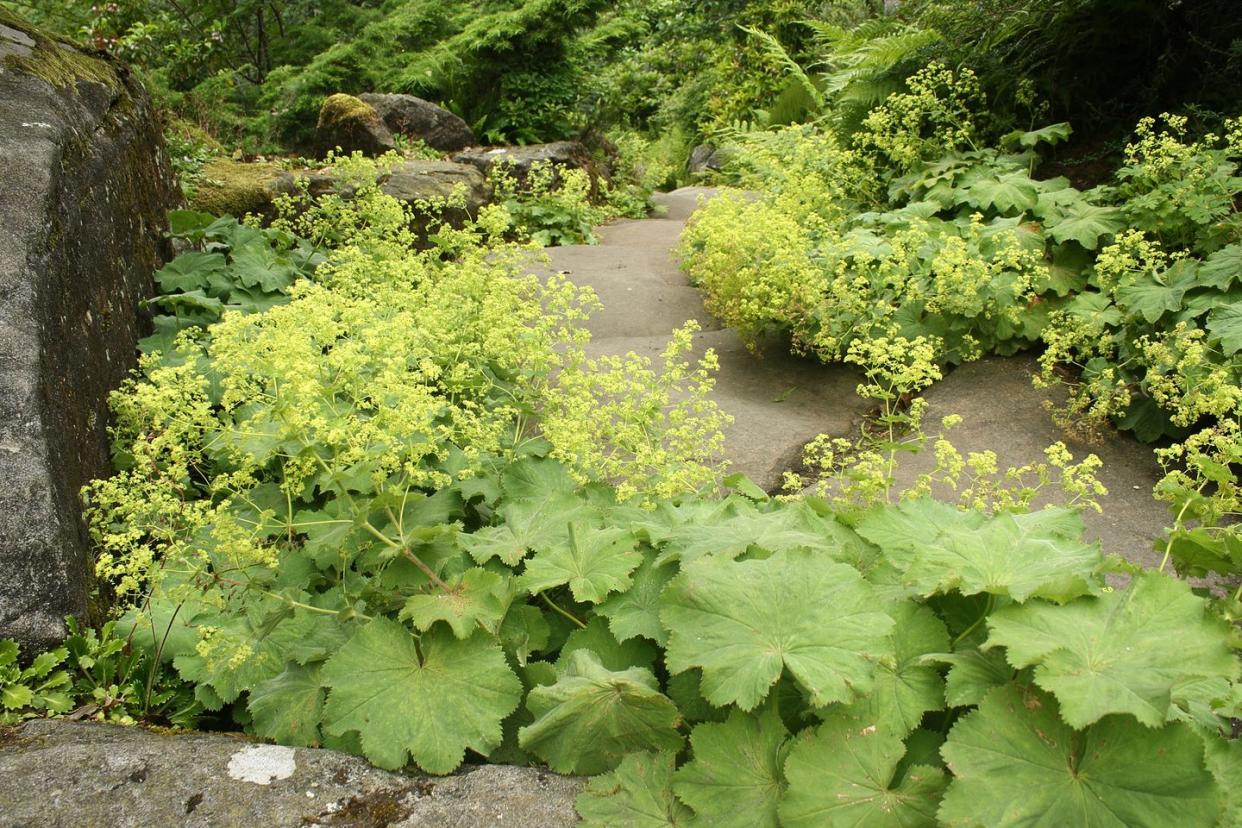
Alyssum
The charmingly dainty blooms of alyssum make an impact when planted in groups and, thus, are a popular choice for borders. They are a great solution for ground cover and grow anywhere from 6 to 12 inches in height. They're well suited for zones 9–11.
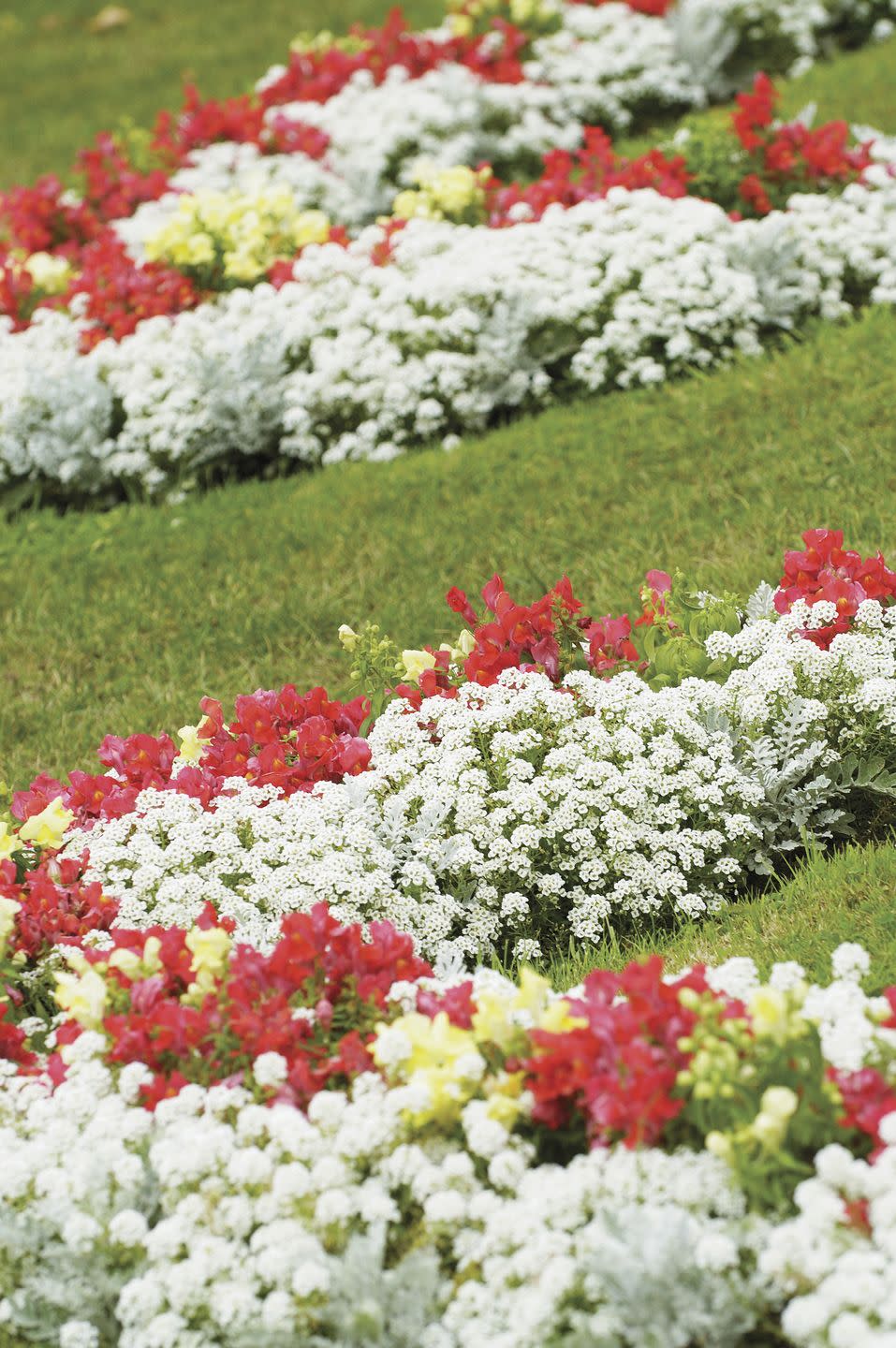
You Might Also Like
